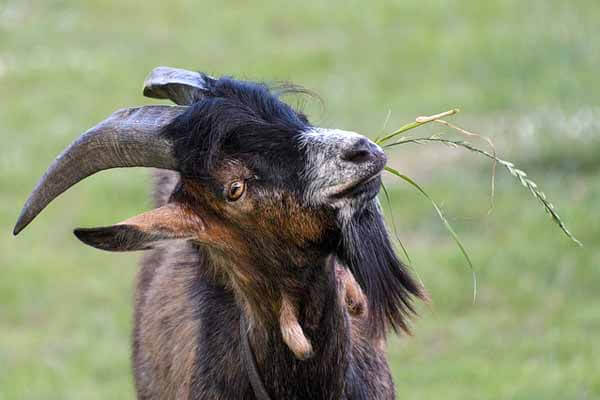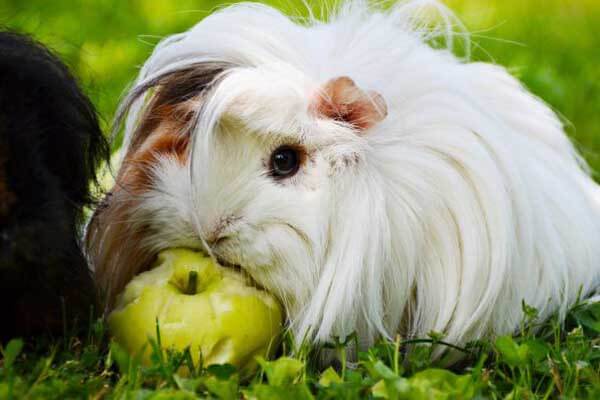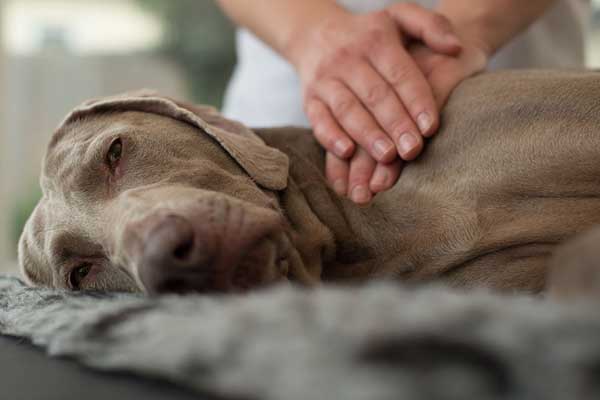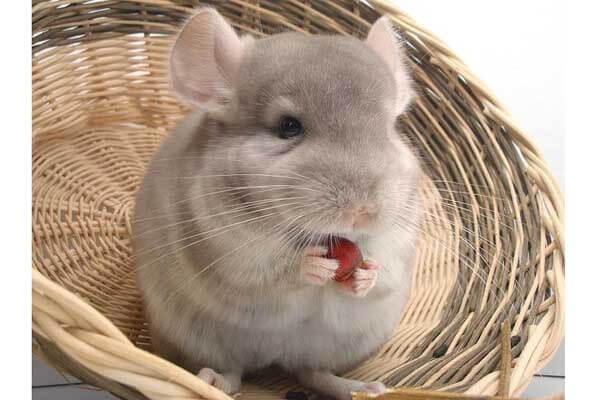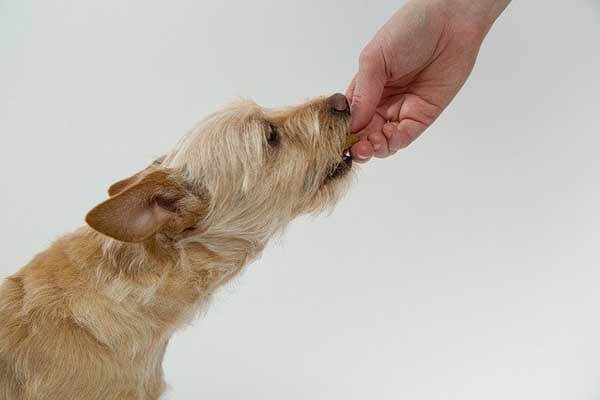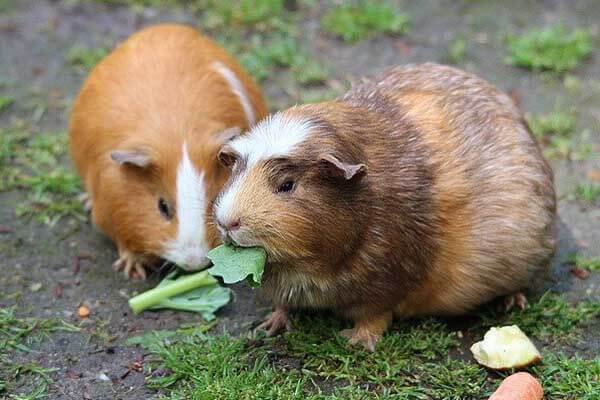It’s a whole new world out there in puppy nutrition.
Each year, veterinary nutritionists learn more about what pups need to grow into healthy, happy adult dogs. Thanks to their research, 21st-century dog owners can purchase foods designed for their puppies size and growth rate. Just another marketing ploy, you say? Not necessarily.
Take large-breed dogs, for instance, which have more developmental skeletal problems than smaller breeds. Large breeds are defined as any dog that will weigh 50 pounds or more as an adult. Conventional wisdom once said that big dogs with big bones needed lots of calcium and other nutrients during their growth stage.
For a long time we thought that young, rapidly growing dogs, particularly of larger breeds, needed to have more calcium, phosphorus, protein and calories, and now we know that’s really not true, says John Hamil, D.V.M., of Canyon Animal Hospital in Laguna Beach, Calif.
Feeding For Size
As it turns out, says Dan Carey, D.V.M., a veterinarian in the Iams research and development division in Dayton, Ohio, just the opposite is true. Large-breed puppies need less calcium so their bones can develop normally as they’re growing. We found that if we reduced the calcium in diets for large-breed puppies and controlled the calories, keeping them from growing too fast, we could actually help them grow with fewer problems. Dr. Hamil, who breeds Bloodhounds, says that large and giant dogs seem to do better on this type of toned-down diet with fewer calories and lower levels of protein.
Some dog food manufacturers have also added nutrients believed to help improve joint cartilage, such as glucosamine and chondroitin, to diets for puppies, as well as large-breed adult dogs. These nutraceuticals, as they’re called, are stable in foods for long periods, Dr. Carey says. We’ve tested it every which way we can, and the nutraceuticals not only survive the extrusion process-the making of the kibble-but are there for considerable time after the foods shelf life, he says.
What about small and medium-size dogs? They can have special needs as well. Small dogs of any age have a higher metabolic rate than large-breed dogs. This means that they burn energy more quickly, so their energy requirements are much higher. Diets for small and medium-size dogs, then, are formulated slightly differently than those for large breeds, and they have a different ratio of nutrient to calorie content.
The small guys, those that weigh less than 20 pounds, can really benefit from a nutrient-dense food that gives them a lot of nutrition in a small amount because their stomachs just aren’t that big relative to their needs, explains Dr. Carey.
Keep in mind that a regular puppy food, as opposed to a food that’s made specifically for a certain size dog, provides complete and balanced nutrition for any size dog; the difference is that its not fine-tuned to meet the precise needs of, say, a Saint Bernard puppy.
What if you don’t know how big your puppy is going to be? Mixed-breed puppies adopted from animal shelters often don’t come with background information about their parents size. But theres a rule of thumb that will get you in the ballpark, according to Dr. Carey. Based on the puppys weight at 8 weeks of age, you can estimate that it will be four to five times that size when its an adult. For example, an 8-week-old pup that weighs 12 pounds is likely to weigh 48 to 60 pounds as an adult. This estimate is probably a little on the low side, but it can give you an idea of whether you need to provide a food geared for a large or small breed.
Get Into a Routine
Whatever you choose to feed your puppy, the most important thing is that it be a complete and balanced diet. During a puppys formative period, both when its still in its mom and during the early feeding and growth period, poor nutrition can lead to all sorts of adverse long-term implications, such as a compromised immune system or poor skeletal development, or things that we don’t even yet know about, says Dorothy Laflamme, D.V.M., Ph.D., a diplomate of the American College of Veterinary Nutritionists and a Ralston Purina Research Fellow in St. Louis, Missouri. So, good nutrition is very important during that early phase.
Unless you’ve raised a lot of puppies, growth rate can be difficult to determine, but your puppys body condition provides a clue, so keep tabs on that waistline and tummy size. Good nutrition doesn’t mean that young Rover should be roly poly. A healthy, well-fed puppy is slim, not stout. The biggest nutrition problem for dogs in America is obesity, Dr. Hamil says. It starts with puppies, just like it does with children, by getting too heavy when they’re young.
Your well-fed puppy should be slightly lean, with some cover over the ribs. A little puppy fat is okay, but a big round tummy is a sign that a pup is overweight. Stand over your puppy and give it a healthy hug with your hands. Can you feel its ribs? Then its just right. If you can’t feel the ribs, its too fat. Take a good look at your pup. Is its abdomen fairly flat or does it have a protruding abdomen and little or no waistline? In the latter case, your pup has put on a few too many pounds.
Just as important, if not more so, is a moderate growth rate. You’re better off if the puppy grows slightly slower than average, than above average, Dr. Carey says. Adult size is determined genetically, and puppies will get there almost regardless of how fast they grow. You can slow them down a little bit by feeding them moderately so they grow at a moderate rate. They’ll not only eat less food, they’ll also have better skeletal health.
How often should you feed your puppy for optimal growth? That depends on its age and sometimes its size. Theres no hard and fast rule, Dr. Hamil says, but most pups are started on four meals a day after weaning. By the time they’re 10 to 12 weeks old, they’re eating three meals a day, and by the time they’re 4 months old (16 weeks), they’re eating twice a day, a regimen that should be continued throughout the dogs life.
Multiple meals aren’t always convenient for working owners, however, and Dr. Carey says its perfectly fine to feed young puppies twice a day. I feed puppies twice a day from the time they’ve completed weaning all the way to the bitter end, he says. If you want to, you can feed them three times a day until they’re 4 months old, then switch to two times a day. In the work we’ve done, however, we can’t see any difference in the puppies or their happiness, play activity, behavior and so forth, if we feed them twice a day versus three times a day. That’s after they’ve completed the weaning process though. When you’re weaning them, you may have to feed them three or four times a day for that week.
Follow Your Pups Growth
That said, small-breed puppies usually need to eat a little more frequently than large-breed puppies. Chihuahuas, for instance, tend to nibble throughout the day, and Chihuahua puppies can be prone to hypoglycemia, or low blood sugar, if they don’t eat often enough. Your veterinarian can help you decide what’s best for your pup, based on past experience with the breed or similar sized dogs.
Once a puppy of any breed or size reaches 4 to 6 months of age, its rate of growth slows down. They’re still growing and they still need extra nutrition, Dr. Laflamme says, but their calorie requirement decreases. That’s when its important for the pet owner to continue monitoring the puppy and adjusting the amount of food accordingly. Puppies are all individuals, and even if a pet owner has two littermates, they may not need to be fed exactly the same way. One puppy may need more and one may need less. Monitoring body condition and feeding to promote healthy growth without creating a fat puppy is best for the puppy in the long run.
Although their growth starts to slow by 6 months of age, puppies still need extra nutrients until they reach full physical maturity. The age at which they meet maturity varies by breed, with some breeds maturing much more rapidly than others. With small dogs, I think you can put many of them on adult diets by the time they’re 9 months to a year, Dr. Hamil says. With large breeds, they’re really not mature until they’re 2 and sometimes even 3 years old. You can keep them on the large-breed puppy diet until they’re 2 years old.
For dogs that will have an adult weight of 90 pounds or more, Dr. Carey also recommends keeping them on a puppy diet until they’re 2 years old. Most dogs that will weigh less than 90 pounds at maturity can be switched to an adult diet at about 1 year of age. At 12 months, they’ll be almost full size from a skeletal standpoint, he says.
When its time to change your puppys food, whether you’re making the transition to an adult food or simply changing brands, always do it gradually. Dogs have sensitive stomachs, and a rapid dietary change can bring on vomiting or diarrhea. Begin by adding small amounts of the new food to your puppys regular food over a period of five to 10 days. The more different the foods are from one another, the more gradual the change should be, Dr. Laflamme says.
For instance, if you’re switching from Brand A Puppy Food to Brand B Adult Food, the change should go more slowly than if you’re changing within the same line of food; say, from Brand X Puppy Food to Brand X Adult Food. The same is true if you’re switching from dry food to canned food or vice versa. Allow plenty of time for the dogs gastrointestinal system to fully adapt to the new diet. One of the advantages of switching within a line of food-from a puppy food to the same manufacturers adult food-is that theres usually a consistency of ingredients, and that can help reduce the risk of a tummy upset, Dr. Laflamme says.
How can you tell if your puppy is eating the right food? Simple. Just take a look at your pup. A puppy eating a balanced diet is bright-eyed, well-muscled and active, with good breath, a shiny coat and healthy skin. Its not too fat and not too thin. If you can look at your puppy and honestly say that it meets the above description, relax. You’re doing a great job of feeding it.
There are some basic Rules for Feeding Your Puppy. First of all, you should not overfeed your puppy, as this will make it feel full and cause diarrhea. Puppies require a large amount of food, and it is not recommended to overfeed your puppy. To follow the proper feeding schedule, divide the food into smaller portions and feed your puppy three to four times a day.
A good rule to follow is to divide the daily feeding requirements for puppies by the number of meals. A puppy’s diet should consist of 90 percent of its daily calorie intake from complete food, and ten percent should come from treats. This rule can prevent your puppy from gaining weight as they age. Providing your puppy with treats can be rewarding, but be sure that they are only a small portion of his or her daily calories.
Puppies should be fed by meal. Meal feeding is an excellent way to control how much food your puppy eats at once, and also allows you to train your puppy to eat on a schedule. This will make house training a breeze. It is important to remember that a puppy’s stomach is small, so it should be fed small meals more often. As a rule of thumb, a puppy’s daily diet should be divided by the number of meals your puppy gets per day.
Another rule to follow is the 90/10 rule. For a puppy, 90 percent of their daily calories should come from complete food, while only 10 percent of their food should come from treats. This way, you can make the transition from one food to another without risking your puppy’s health. As you get acquainted with these simple rules, you’ll soon be on your way to feeding your puppy the best way possible.
Firstly, you should expose your puppy to people’s food. Never offer your puppy food from the dinner table. Providing your puppy with your food at every meal will encourage it to eat more. However, giving in to your puppy’s begging will only result in obesity – and your puppy is likely to become obese. If you give in to your puppy’s begging, he may become obese and will have to suffer from this condition for the rest of his life.
When it comes to feeding your puppy, you should follow the recommended nutrition guidelines. According to vets, your puppy needs to eat three to four times a day. If you feed your puppy more frequently, he will be less likely to gain weight. And remember, puppies have a big appetite and can cause joint problems. When you have a small puppy, you should feed her in small portions as she grows, until she is at least 12 weeks old.
Firstly, you should always provide fresh water to your puppy at all times. If you do not provide freshwater, your puppy will become dehydrated and will have to pee more often. If you leave food down, your puppy will be tempted to overeat. The last time you feed your puppy is when you want it to be fully satisfied. By allowing your puppy to eat more, your dog will be happier and healthier in the long run.
You should give your puppy a few treats every day. During the first few weeks, your puppy will be ravenous and will be hungry most of the time. So, it is important to make sure your puppy does not overeat. In general, puppies should be fed around the same time as you do. If your dog eats less than twice a day, it will become overfed. In addition to the rules, it is important to provide fresh water to your puppy.
There are a few basic rules for feeding your puppy. The most important is to remember that puppies need more food than adults. It is also important to remember that your puppy needs to eat frequently, so be sure to provide a separate dish for water. It is not uncommon for your puppy to be a chubster for a few weeks. If you want to avoid the chubby phase, consider introducing your puppy to a variety of foods.
